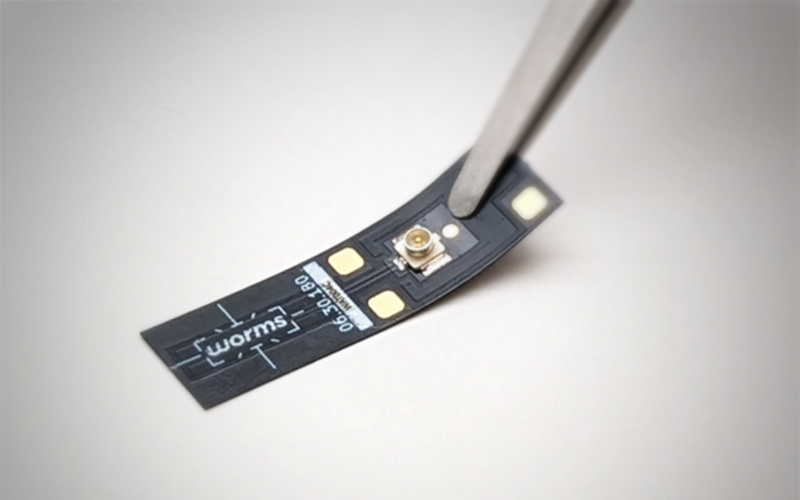
WormSensing’s flagship sensor is as thin as a hair and offers unparalleled precision in detecting the slightest vibration. The invention has a bright future in the area of predictive maintenance, structure control, instrumentation and the introduction of human-machine interfaces. “Our sensors are a thousand times more accurate and ten thousand times more compact than those currently used for vibration measurements,” explains Jean-Sébastien Moulet, one of the co-founders. “With a thickness of about 150 microns, the sensor’s patch format can be easily integrated into any type of equipment in any environment in just minutes.”
Coming soon: 2 million sensors per year
Grenoble INP - Phelma, UGA graduates Lamine Benaissa and Jean-Sébastien Moulet both learned the ropes at CEA-Leti, where they worked on new materials for microelectronics. It was there that the two researchers realized that some of the piezoelectric materials originally developed for semiconductor applications could be used to produce miniature and ultra-precise sensors. “We wanted to make them available for other applications.”
Their hard work and expertise paid off. They succeeded in producing extremely high-precision piezoelectric materials in thin layers and then integrated them into flexible electronics, making them easy to handle. They have developed a sensor with a revolutionary form factor that opens up new horizons. “Our sensor combines a thin and flexible design, while guaranteeing good-quality measurements. These features open up opportunities for applications in every industrial sector and in equipment of all sizes, from the largest structures, for example for monitoring wind turbines, to the smallest spaces, like the inside of a car handle to create a human-machine interface.” The technology is protected by several patents and has been successfully tested on several demonstrators. The first production line was inaugurated at the beginning of 2024 and is expected to produce two million sensors a year.



